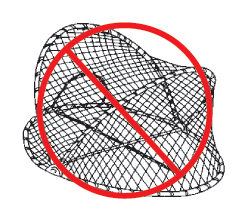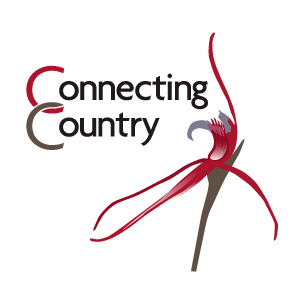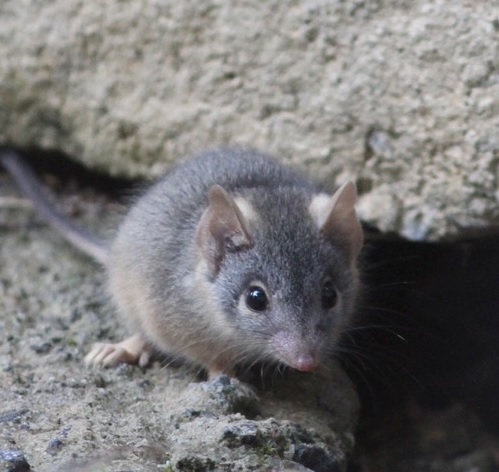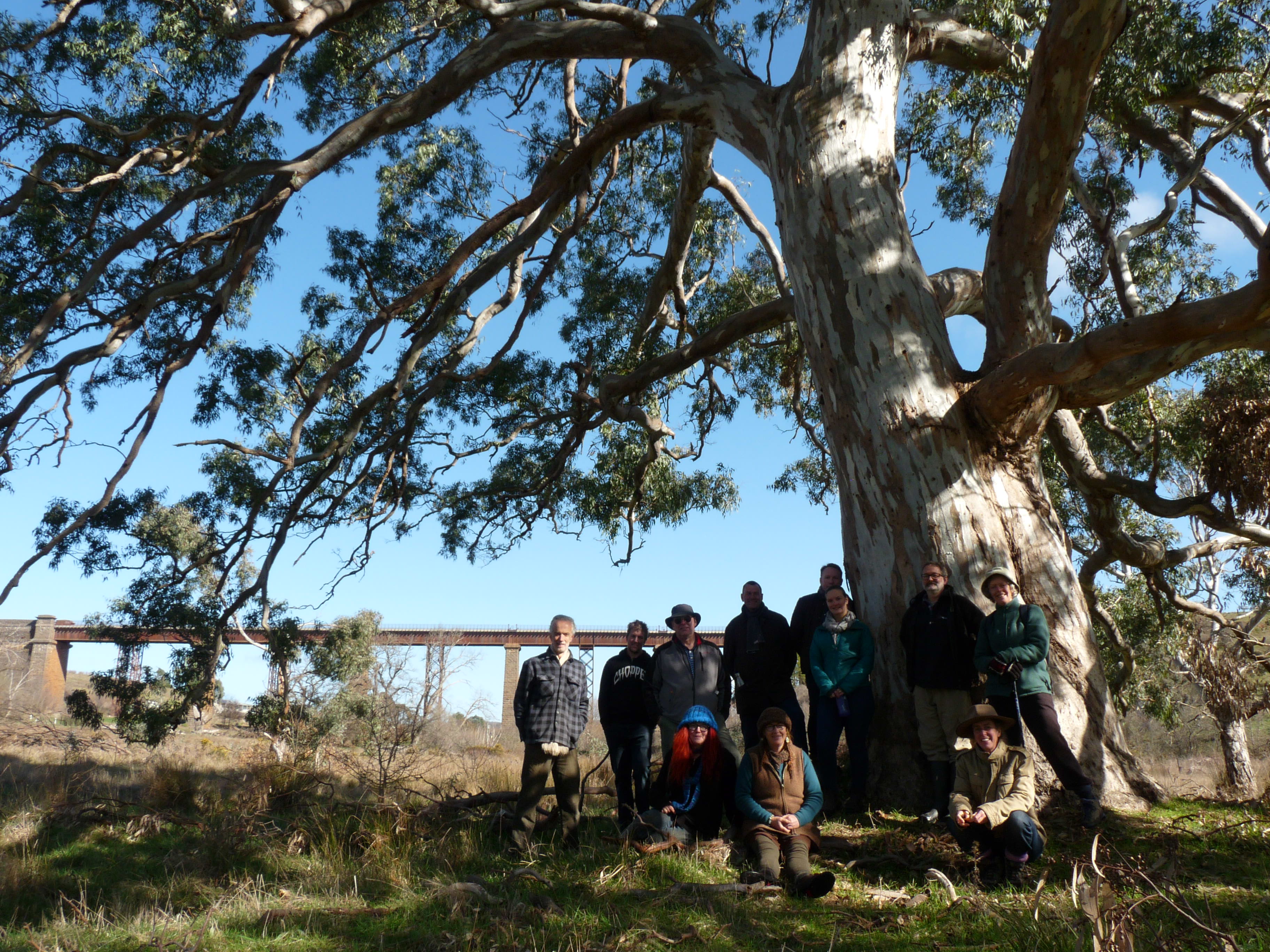Snake and reptile workshop – 19 January 2019
Posted on 20 December, 2018 by Jacqui
Join Connecting Country and Muckleford Catchment Landcare on Saturday 19 January 2019 from 10.00 am to 12.00 pm to learn about snake ecology and behaviour. Snakes play an important role in healthy ecosystems, snacking on frogs and smaller reptiles and providing a food source for larger predators. Find out what makes good snake habitat, how we can protect snakes, as well as keep our pets and families safe!
The workshop will include an opportunity to meet real live snakes. However this activity is optional.
This is a family-friendly event held at a property in Muckleford, VIC. All are welcome. Morning tea will be provided.
RSVP is essential. For bookings and more information contact Jacqui Slingo by email at jacqui@connectingcountry.org.au or phone 03 5472 1594.
A flyer on the workshop is available here.
This workshop has been made possible by funding from the North Central Catchment Management Authority.
Learn to use the Atlas of Living Australia – 4 February 2019
Posted on 20 December, 2018 by Frances
The Atlas of Living Australia (ALA) is a collaborative, national project that collects biodiversity data from multiple sources, and makes it freely available and usable online.
Hepburn Shire and the Victorian Gorse Taskforce have organised a forum to explore the potential of the Atlas of Living Australia for local weed and other environmental projects.
The forum will include two sessions:
Atlas of Living Australia in the field
An interactive session for how to use the ALA in the field. This session will be of interest for those individuals, groups and contractors who need to map the occurrence of native or exotic plants or animals and/or have a database for their environmental monitoring data.
Atlas of Living Australia as a planning tool
Learn how the ALA can be used by individuals and groups to plan, manage and document natural resource management projects and for project design, strategic planning and policy development at landscape scales. This session will focus on how you can use the ALA for weed control, biodiversity management, local government planning, etc. (e.g., how the ALA can assist you in organising a weed control program in an area).
Forum: Using the Atlas of Living Australia
Date: Monday 4 February 2019
Times: 10.00 am to 1.00 pm – Session 1
1.00 pm to 2.00 pm – Lunch and display
2.00 pm to 5.00 pm – Session 2
Venue: Victoria Park, Corner Ballan Rd and Burrall St, Daylesford VIC
Bookings are essential via https://www.trybooking.com/ZZSO or call Hepburn Shire on 5348 2306.
You can choose to book for Session 1 or Session 2 or both sessions. Lunch is provided. Please advise dietary requirements
A flyer for the event is available here.
Presenter profile
Peter Brenton is based with the CSIRO in Canberra and has worked with the Atlas of Living Australia since 2009. For the past six years he has lead the ALA’s work to develop and implement tools which support the many and varied needs of field-based data collection by the ecological and citizen science communities. He is particularly interested in making the efforts of citizen scientists and the data which they collect more visible, relevant and accessible in areas where they can have great impact.
And a very antechinus Christmas to all!
Posted on 19 December, 2018 by Tanya Loos
Who needs reindeer, red robins, or snowmen when the holiday season is graced with baby antechinus! Landholder Jane Rusden lives on a bush block in Campbells Creek, and is able to watch the antics of very young antechinus just after they leave the nest.
The antechinus is a carnivorous marsupial, in the same family as the much larger Tasmanian Devil, quoll and phascogale. In the Castlemaine region our local species is the Yellow-footed antechinus. These attractive marsupials are regular feature on Geoff Park’s blog, Natural Newstead. To identify the presence of antechinus or rats by their droppings, click here to read a post on Tanya Loos’ blog.
Please scroll through to enjoy this gallery of photos of the young antechinus that Jane photographed from her lounge room window last week. Thank you to Jane for sharing them!
Connecting Country office hours for Christmas 2018
Posted on 18 December, 2018 by Frances

Owlet nightjar at Moonlight Flat (photo by Frances Howe)
The Connecting Country office will be closed from Friday 21 December 2018 and reopen on Wednesday 2 January 2019.
Our usual office hours are 8.30 am to 4.30 pm Monday to Thursday. If you’re coming to visit please feel free to call ahead, as occasionally we’re all out and about at once.
We wish you all the best for a safe and peaceful holiday season, with lots of interesting summertime critter sightings!
Wombat Forest birdwalk – 5 January 2019
Posted on 18 December, 2018 by Frances
The next monthly BirdLife Castlemaine District Branch bird walk will be on Saturday 5 January 2019. The walk will be led by Tanya Loos and will be through relatively moist leafy forest, perfect for the summer holidays. Suitable for all ages and levels of bird enthusiasts.
Join Tanya on a wander through the wet ferny gullies and peppermint ridges of the Wombat Forest. We will do the Whipstick Creek Loop walking track which takes 3 – 4 hours. Those who wish to do part of the walk can retrace their steps. On our walk we are likely to see local special species such as Rufous Fantail, Crescent Honeyeater, Gang Gang Cockatoo and Blue-winged Parrot. We might also see Rose Robin, Bassian Thrush and Square-tailed Kite.
Wear sturdy shoes and a hat, and bring along insect repellent, sunscreen, water, snacks and lunch. And, of course, binoculars. In case of extreme weather the walk will be cancelled.
Meet at the former Continuing Education building at 30 Templeton St Castlemaine VIC at 8.30 am sharp, to car pool. Alternatively, meet at Garden of St Erth car park, 189 Simmons Reef Rd Blackwood, VIC at 9.30 am.
Garden of St Erth is one of The Diggers Club’s properties and a fantastic perennial and fruit garden, with a cafe and nursery – well worth a look!
Wombat Forest birdwalk
When: Saturday 5 January 2019 at 8.30 am to car pool or 9.30 am to join walk
Where: to carpool meet at 30 Templeton St Castlemaine VIC
to join walk meet at Garden of St Erth car park, 189 Simmons Reef Rd Blackwood, VIC
Bring: sturdy shoes, hat, insect repellent, sunscreen, water, snacks, lunch, binoculars
For information about BirdLife Castlemaine District Branch click here
The restoration of Taradale Landcare
Posted on 17 December, 2018 by Asha
If you read the Midland Express newspaper, you may have been enjoying Connecting Country’s monthly ‘Nature News’. This year we featured Landcare stories written by intern Sarah Edwards and local Landcarers. This week, the last of these ten stories was published in the paper, featuring this story written by Brian Bainbridge about the wonderful Taradale Landcare.
Taradale Landcare Group came together over twenty years ago over their shared passion for walking in the bush, managing the land, and learning about native flora and fauna. After many years of committed work, eventually the group lost momentum and folded in 2012.
Following a meeting to gauge interest, several prospective new members and a sprinkling of original members reformed Taradale Landcare in 2016.
Things started slowly with meetings and discussions to learn about the member’s priorities and interests- as well as conducting the ‘house-keeping’ needed to re-establish the group’s organisation and accounts. The Back Creek alongside the Mineral Springs Reserve near the centre of town has become a natural focus and base. The group has resurrected the work of the earlier group by treating weeds, uncovering the now maturing plantings, and replanting to fill in the gaps. In 2018, a Mt Alexander Shire Roadside weeds grant has encouraged the group to learn to coordinate and conduct sensitive weed control along the best roadside remnants, a process expected to continue for several years.
The group’s walks and talks encourage exploration by the many newly arrived residents of their adopted town’s historical sites including the Channel, Barkly Park, the Cemetery and the Quartz Battery, each with important ecological values that could be enhanced. This summer will see the group conduct seed collection (under permit) and propagation of wildflowers, grasses and trees- in consultation with the Cemetery trust.
A theme of the newly emerged group is to engage and have a presence at local gatherings while ensuring the group’s own events have a social as well as ecological outcome. Shared meals encourage the sharing of ideas to continue long after the ‘real’ work has ended.
If you are interested in being a part of Taradale Landcare Group or have any questions, email Colleen Jones at colfjones@yahoo.com.au or like the group’s Facebook page at https://www.facebook.com/taradalelandcare/.
Good riddance to deadly opera house yabby nets
Posted on 12 December, 2018 by Frances
The dams and waterways of central Victoria are perfect for catching yabbies over summer. However, poorly designed yabby nets also catch native wildlife like platypus, turtles and rakali (native water rat). Sadly, these air-breathing animals can become trapped in the nets and drown.
Opera house style yabby nets are believed to kill hundreds of platypus each year. In January 2018, the Department of Environment, Land, Water and Planning (DELWP) recorded that 13 platypus died after drowning in illegally set opera house nets in Victoria. DELWP urged Victorians not to use enclosed traps such as opera house nets, and only use platypus-safe alternatives. Senior Wildlife Investigator Mike Sverns said, ‘Platypus are an iconic Australian species that are declining. To lose 13 platypus in one year is tragic’.
Opera house nets are banned in all waters throughout Victoria from 1 July 2019. Opera house nets have been phased out and replaced with new open-top lift nets, which are more wildlife friendly. Unlike opera house nets, open-top nets feature a 20 x 20 cm gap at their top, which enables air-breathing animals like platypus to escape. The Victorian Fisheries Authority has conducted trials and shown open-top lift nets are very effective yabby catchers.

When announcing the ban, Minister for Agriculture Jaala Pulford said, ‘Opera house nets have been placing our platypus population at risk and so it’s time for us to embrace different fishing gear that will catch just as many yabbies without impacting our precious wildlife’.
Many people who have purchased opera house nets to fish for yabbies are unaware of the risks they present to wildlife, and that these nets have long been banned in Victorian public waters. From 1 July 2019 the ban will extend to include all private waters.
If you have an opera house net you should dispose of it and replace it with an open-top lift net. We recommend dismantling old opera house nets, as even on land they can still entangle terrestrial wildlife, leaving them to a slow and painful death.
Major fishing equipment suppliers and responsible retailers have already removed opera house nets from sale, with some participating in a yabby net swap program. However, a few retailers continue to sell opera house nets despite the wildlife risk and imminent ban.
 Under the Victorian Wildlife Act 1975 there are penalties associated with taking or being in possession of protected wildlife or using prohibited equipment which is up to a maximum of $38,0562, and/or 24 months imprisonment. To report crimes against wildlife you can call Crime Stoppers confidentially on 1800 333 000 or online at https://www.crimestoppersvic.com.au/report-a-crime/
Under the Victorian Wildlife Act 1975 there are penalties associated with taking or being in possession of protected wildlife or using prohibited equipment which is up to a maximum of $38,0562, and/or 24 months imprisonment. To report crimes against wildlife you can call Crime Stoppers confidentially on 1800 333 000 or online at https://www.crimestoppersvic.com.au/report-a-crime/
Open mic at Castlemaine Field Nats! – 14 December 2018
Posted on 12 December, 2018 by Asha
As per Castlemaine Field Naturalists tradition, their December 2018 general meeting is a chance for any member (or visitor) to make a short presentation. People are encouraged to talk for up to five minutes about a topic related in some way to natural history. It might be photos from a holiday to an exotic location, video footage of birds in your backyard, an analysis of recent weather patterns, or reciting a poem about a forest. It is only limited by your imagination. There will be a projector, PC laptop and screen available for use.
The evening commences from 7.30 pm on Friday 14 December in the Fellowship Room behind the Uniting Church on Lyttleton St, Castlemaine VIC (next door to the Castlemaine Art Museum). Members and visitors of all ages are welcome, and entry is free.
If you’d like, bring along a plate of food to share with everyone afterwards.
For further information on Castlemaine Field Naturalists Club see their website here.
Citizen scientists sought – testing new wildlife monitoring technology
Posted on 12 December, 2018 by Asha
Deakin University, in collaboration with Land for Wildlife, is seeking volunteers to participate in a citizen science project called Wildlife to Wellbeing. The project will trial new camera technology to monitor and identify wildlife on properties registered with the Land For Wildlife program in Victoria.
This is an exciting opportunity to be part of a project that tests new video technology developed at Deakin University, and being used for the first time anywhere in the world! The technology enables 24-hour, continual monitoring of wildlife and will capture video recordings of a greater proportion of animals than existing wildlife cameras.
The cameras will operate for up to three months from the time of set up in January/February 2019. Deakin Uni will collect the cameras at the end of the project to reuse in future projects.
To participate, your property needs to have heathy dry forest or grassy dry forest ecological vegetation classes (EVCs). You may qualify if your property is located in central Victoria, within the rough area of Bacchus Marsh – Ballarat – Ararat – Maryborough – Dunolly – Bendigo – Elmore – Rushworth – Seymour – Yea – St Andrews – Whittlesea – Sunbury.
Getting involved
For more information about getting involved, go to http://bit.ly/Wildlife_To_Wellbeing
Or contact Jason Major by email at j.major@deakin.edu.au or phone (during business hours) on 0455 288 309.





